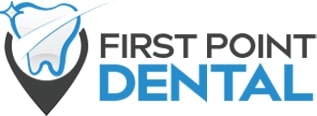Dental X-Rays
Every individual who visited a dental clinic might have spotted an X-ray machine. It’s a powerful diagnostic tool to spot any signs of concern in teeth, gums, jaws, or any part of the mouth. Typically, the dentist includes the X-rays in routine dental visits or for diagnosing any oral healthcare concern. Matter-of-the-fact, dental X-rays are diagnosing a dental problem before it causes severe problems like money, pain, or even loss of life. The readers need to know what are dental X-rays and why they have become an important preventative and diagnostic tool.
What are Dental X-Rays?
Wearing the apron and holding a device between your teeth for a few seconds might not sound like a fun activity at all. Yet, X-rays help the dentists in knowing the condition of the teeth, jawbone, facial bone composition, and roots. X-rays can identify any problems that could be missed in an oral exam.
How are X-Rays Performed?
There are a lot of myths around X-rays but it’s quite a painless procedure. One wouldn’t feel any problem or hint of discomfort at the X-rays done at our clinics. Let’s breakdown the procedure into steps-
- Dental X-rays will be taken with the patient sitting upright in a chair.
- A lead apron over the patient’s chest with the wrapping of a thyroid collar around the neck.
- The dental technician will place the X-ray sensor or film in the mouth for the picture.
Note: If anyone has a sensitive gag reflex, one should intimate the dentist. This is important to do before the X-ray is conducted. In cases like this, the dentist will alleviate the problem by taking the necessary steps.
How do X-Rays help in the detection of Oral Problems?
X-rays will help in the early diagnosis of any oral problem in the mouth or jaws.
X-Rays in Adults-
- Teeth decay
- Decay below the existing dental fillings
- Jawbone loss severity
- Damage to the bone or root canal due to infection
- Evaluating the teeth’s condition for dental procedures like braces, dental implants, dentures, root canal procedure
- Identifying any change in teeth’s alignment
- Signs of any Abscesses (an infection at the root of a tooth or between the gum and a tooth).
- Catch oral cancer signs
X-Rays in Children
- Evidence of tooth decay
- Check if there is space to fit the teeth
- Monitors the progress of the wisdom teeth’s growth
- To check for signs of teeth impacting
What are the different types of dental X-rays?
Dental X-ray is of two types-
Intraoral –
- The dentist will place the X-ray film inside the mouth
- The main objective of the x-ray is to check the teeth, cavities, and the health of the tooth root and bone surrounding the teeth.
Extraoral –
- The dentist will place the X-ray film outside the mouth
- It will teeth but their main aim is to find the health of the jaw and skull.
How often should one go for teeth X-Rays?
The number and frequency of the X-rays all hinges on the patient’s current oral health, medical plus dental history. Usually, the ADA recommends a dental X-ray every 6 months. On the other hand, individuals with no history of dental problems and who have regular dental appointments need to take X-rays every 2 years.
Dentists will compare the first-visit X-rays to the X-rays taken over a period of time. This helps the dentist in diagnosing any oral healthcare problem and recommending early treatment.
Also, X-rays would be recommenced to individuals who are at a high risk of developing dental problems.
So, who needs X-Rays-
Children:
- This age group needs X-rays more than adults as their jaws and teeth are still in the growth phase.
- This also means the new teeth are at a danger of contracting the infection.
- To avoid this, the dentist advises regular teeth x-rays for the children.
Adults with a history of restorative procedures
- X-ray examination will help the dentists to check for any decay in the teeth or the existing filling.
People with frequent consumption of sugary drinks
- Identify any signs of tooth decay.
People already diagnosed with periodontal (gum) disease:
- Evaluation of bone loss.
Dry Mouth
Smokers
Are dental X-Rays safe?
Let’s bust the myth first that X-Rays are unsafe. Radiation emitted from the x-ray is extremely low thanks to the rapid advances in the dentistry field.
The reason for the low exposure are:
- Machines restrict the radiation beam to a small & concentrated region
- High-speed X-rays
- Patients wearing lead-lined full-body aprons
- Stringent federal laws calling for regular safety inspections of X-ray machines
Does Insurance cover my Dental X-Rays?
For new patients, First Point Dental offers free X-rays. On the other hand, dental insurance coverage might cover the whole cost of dental X-rays. It’s important to sit down with your insurance provider about your dental plan.
